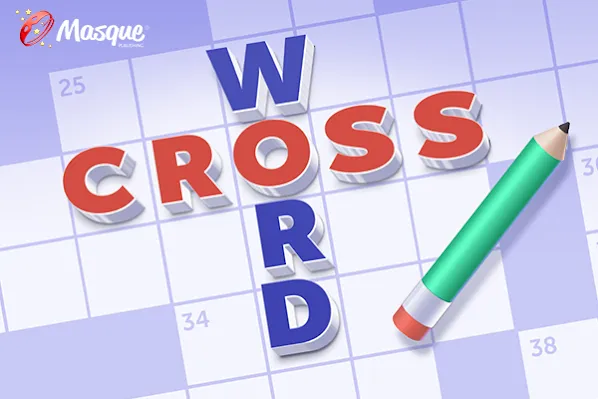Shellfish Safaris: the Top Spots to Catch Your Own Lobsters, Clams, Oysters and More (It's Fun and Easy!)

It’s a seafood safari! (Photo: Thinkstock)
Lobsters, oysters, and clams, oh my! The shellfish safari’s time has come — it’s a catch-your-own-dinner adventure. This type of “safari” seems to have been born in West Sweden, an area famous for its oysters, herring, lobsters, and saltwater crayfish. Small boats regularly take visitors out to the oyster beds and the lobster pots, or to haul up langoustines. It’s all in a day’s work for the fishermen, but it’s a can’t-miss experience for visitors. Now, in the United States, local boat owners are catching on to the tourist appeal and creating recreational experiences that are hands-on and deliver up local flavor (pun intended!). Here’s where to get started on your seafood safari.
Related: Is This the Most Incredible Shelling in the World?
Harvest oysters in Massachusetts and Virginia

On Cape Cod, farmers tend their oyster beds when the tide goes out. (Photo: Getty Images)
Thousands of mollusks in manmade beds are carefully tended for years in places like Cape Cod until they’re big and succulent and ready to be eaten. Call a few days ahead of your visit; at places like Big Rock Oyster Company or East Dennis Oyster Farm in Dennis, Mass., and you can arrange to meet the proprietors to select your own oysters off the tidal flats of Cape Cod Bay — choose the heaviest ones — fresh from the sea. Oyster season is year-round in Massachusetts, but by October it’s supercold, so the best time to go is April through September.
Related: The Weekender: the Perfect 3 Day Trip to Cape Cod
Virginia’s Eastern Shore has been an oyster mecca since the Pilgrims first made landfall. Wild Chesapeake Bay and river oysters were overharvested in the past, but local aquaculture farmers, along with the Chesapeake Bay Foundation, are successfully turning things around. There are oyster festivals around Virginia nearly every weekend from September through November. Check out Anderson’s Neck, which offers an oyster farm / winery combo tour, or Eastfield Farms.
Go clamming in Oregon

People digging for razor clams on the Oregon coast (Photo: Getty Images)
Clams thrive in cool- and cold-climate northern beaches, but some of the East Coast clam beaches require permits or have specific clam-digging seasons. Not so with Oregon. Recreational shellfish season is open year-round all hours (unless an advisory has been issued for a specific region — check before you head out). All you need is a shellfishing license (which you can buy at a sporting goods store), something to dig with, a bucket, and sturdy clothes. You can research the maps of the clam-digging locations via the Oregon Department of Fish and Wildlife website.
Several species of bay clams are found in Oregon’s inlets, estuaries, and near-shore areas. Popular ones for eating include the quahog (aka butter clam), soft-shell, and — in limited areas — littleneck. You can dig for razor clams on any Oregon beaches, although the most bountiful populations are in the Clatsop region.
Catch cold-water lobsters in Maine

Captain John Nicolai holds up a big-‘un on Lulu’s Lobster Boat. (Photo: Lulu Lobster Boat Ride/Facebook)
Maine lives up to the lobster-loving hype, with more than a dozen lobster-boat experiences where tourists can go dredge up their own delicious sea crawler. Onboard the LuLu Lobster Boat Ride departing out of Bar Harbor, guests sightsee and ogle the seals in between learning how to haul the lobster traps. Capt. John Nicolai is one of the state’s most recognizable experts. In Portland, guests go from Long Harbor with Lucky Catch Cruises — and if they don’t want to bring their catch back to wherever they’re staying, they can have it cooked up and eat it right across the street Portland Lobster Company. Tours depart May through October. Maine state law prohibits excursions from pulling lobster traps on Sundays in June, July, and August.
Related: Weekender: A Perfect Day on the Maine Coast
Dive for warm-water lobsters in the Florida Keys

There’s a lobster hiding in there! (Photo: Phil’s 1st Pix/Flickr)
The regular lobster season in Florida runs from Aug. 6 through March 31. (Oddly, there’s a “mini” lobster season that is only two days — the last consecutive Wednesday and Thursday of July.) You must have a saltwater fishing license and permit to catch the crustacean. They’re easy to get — you can buy a non-resident recreational fishing license online via the Florida Fish and Wildlife Conservation Commission. There are also minimum size requirements for the lobsters you can catch and a bag limit on lobsters per person, per day. There are hundreds of fishing boat operators to take you on an excursion. Just ask at your hotel for a recommendation. Important note: In the Florida Keys, you generally free dive for the lobsters; it’s not as easy as just pulling up traps, and those critters are fast! And if you’re not a cook, don’t just assume that any marina restaurant will happily grill up your catch. Most of them won’t. Call and ask before you plop that bag onto the counter.
Related: The Top 10 Most Mouth Watering Lobster Roles in the US
Hunt for scallops in Florida

Yes, this is what a bay scallop looks like. (Photo: Corbis)
Although scalloping in Florida is limited to a short season (roughly June through late September, but different every year) and recreational divers are are only allowed in certain areas — most notably the Gulf of Mexico side of Florida — it is maybe the best seafood-harvesting activity for a family. People compare it to an Easter egg hunt: You just swim slowly along in the warm water, searching through the sea grass for scallops. Visitors can go as part of a guided tour, or they can rent a boat and gear (for which you’ll need a saltwater license). Citrus County is a good area to try, as it specializes in recreational scalloping and has nearly 50 adventure tours.
Net crabs in the Carolinas

Atlantic blue crab catching success! (Photo: OBX Crabbing/Facebook)
“Deadliest Catch” has convinced most people that crabbing is taking one’s life into one’s hands, dredging monsters from the frigid deep. However, around Charleston, South Carolina and the Outer Banks of North Carolina crabbing is a family pastime that you can do standing on a jetty or a dock or the bank of a saltwater creek with just some bait and a net. The most common species is the Atlantic blue crab, which is the same crab found in Maryland and the Chesapeake Bay. If you want equipment a little sturdier than a net, a few excursions and charter boats are available. They take guests out to crab pots where you can haul up several at once rather than catching them one-by-one in a net. OBX Crabbing, recommended by Outer Banks locals, includes shrimping in each excursion, so guests can come home with a double haul of fresh seafood. The season to recreationally fish for crabs in these areas is open year-round.
WATCH: Hermit Crabs: Pets or Delicious Food?
Let Yahoo Travel inspire you every day. Hang out with us on Facebook, Twitter, and Pinterest.
Solve the daily Crossword

